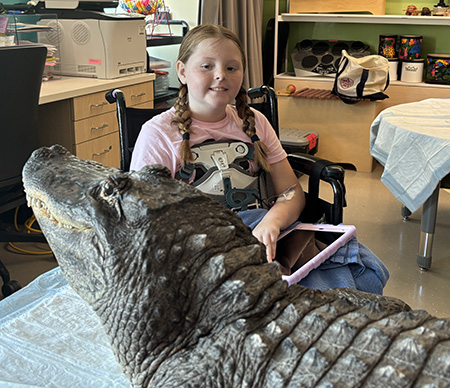Young patients at UC Davis Children's Hospital experienced a heartwarming and educational visit this week, made possible through a special collaboration with SeaWorld San Diego.
The event Thursday featured a variety of rescued and rehabilitated "animal ambassadors." These visitors provided patients, their families and hospital staff a rare opportunity to meet extraordinary wildlife up close, including a sloth, an alligator, a porcupine, and more.
SeaWorld representatives, alongside other wildlife experts, accompanied the animal ambassadors and shared their stories of rescue, rehabilitation and conservation. These animal ambassadors serve an important role in educating the public as part of SeaWorld's ongoing commitment to wildlife preservation and environmental stewardship.

"We are so grateful to SeaWorld for coming by today to visit the kids," said Diana Sundberg, manager of the UC Davis Child Life and Creative Arts Therapy Department. "It's been an exciting morning. It's hard to believe that you'd come into the hospital and have the opportunity to see an alligator or porcupine."
Experiences like these foster meaningful connections with the natural world, inspiring greater care for wild species and the habitats they call home.
For patients and their families, the visit brought moments of joy, wonder and fun during an otherwise challenging time, Sundberg said.
"Our mission at SeaWorld is to provide experiences that matter and inspire our guests to care about our ocean and animals and learn how to protect them," said Tyler Carter, park president of SeaWorld San Diego. "While these children are unable to visit SeaWorld currently, we were able to provide a memorable time by sharing rescue stories, animals and their histories."






